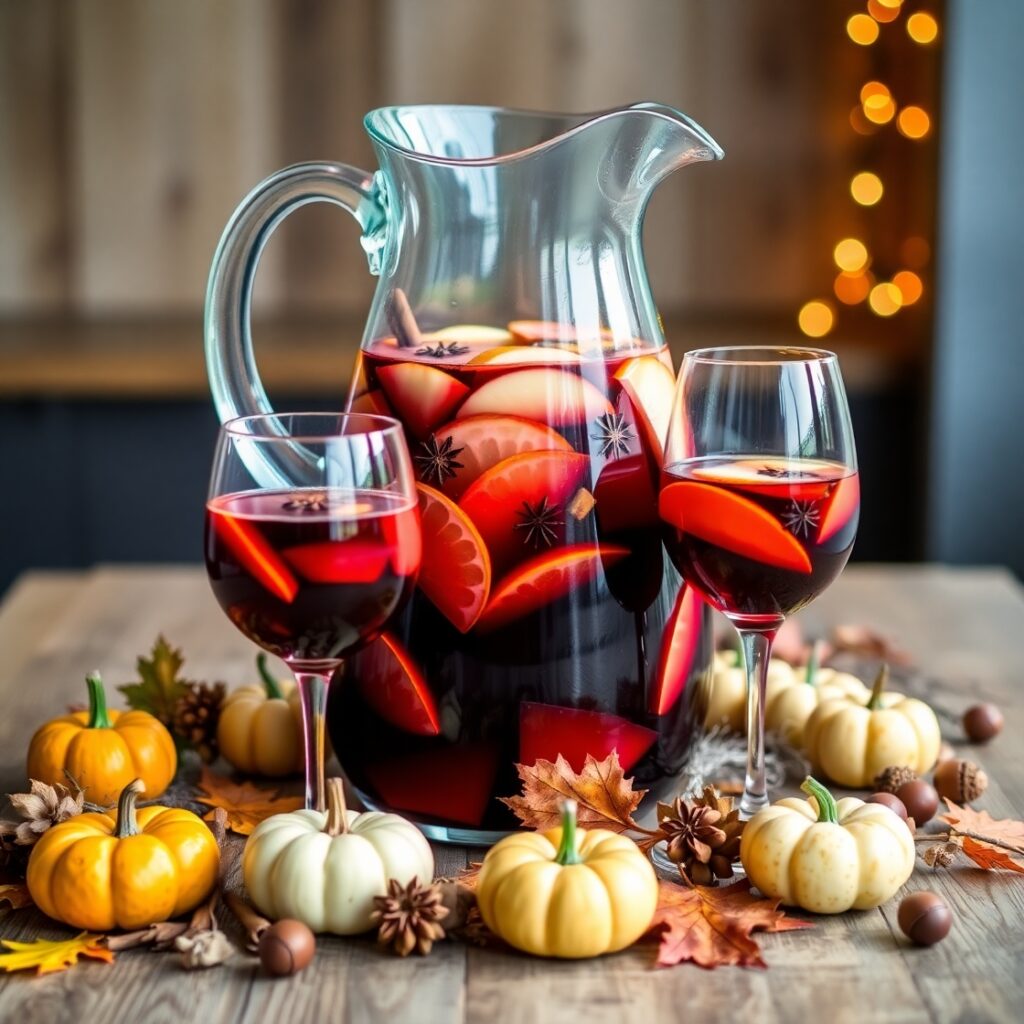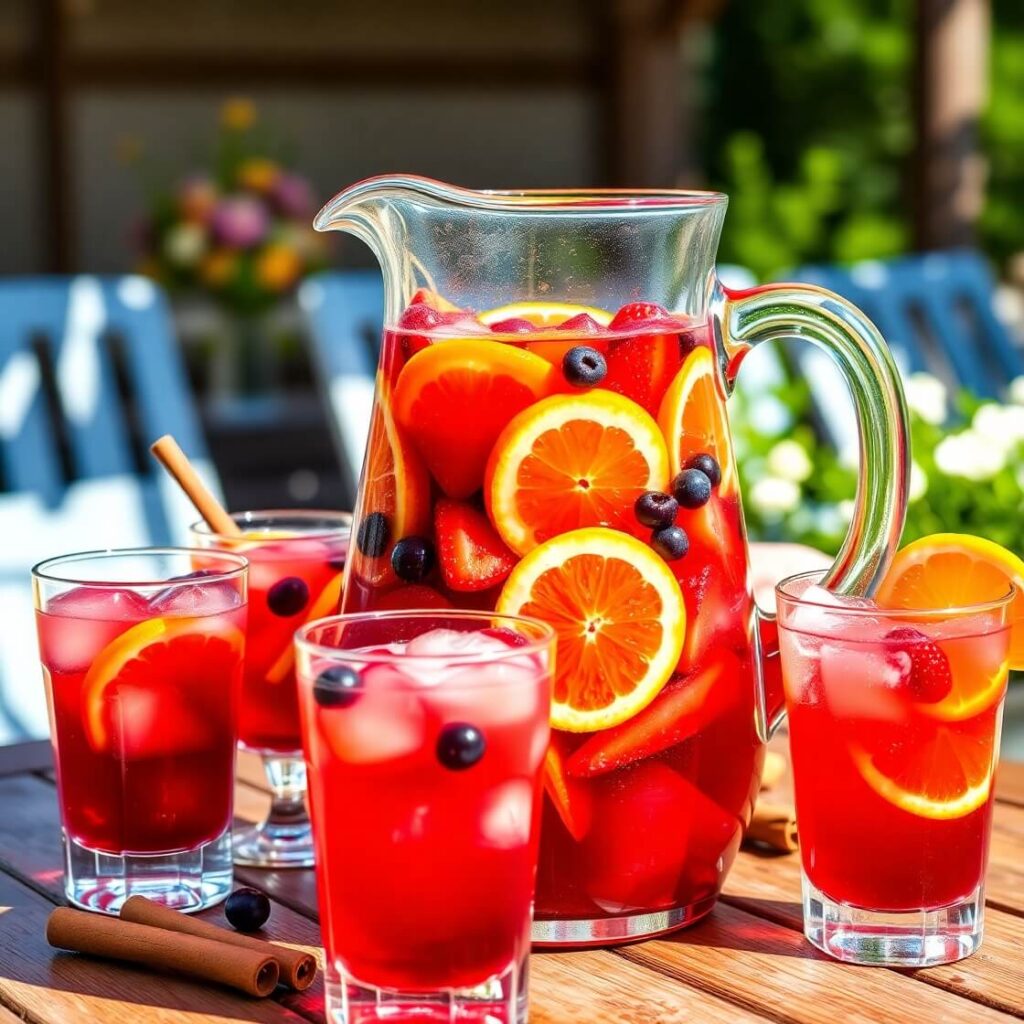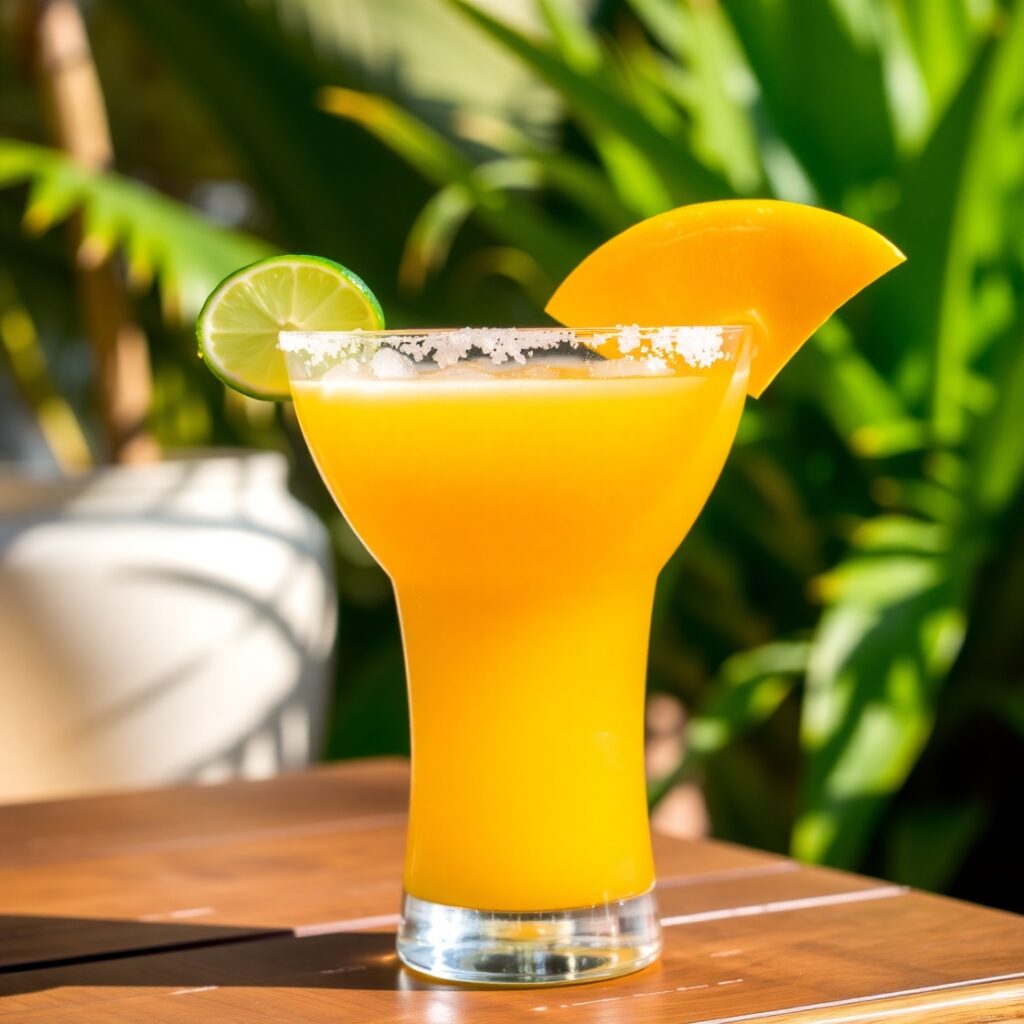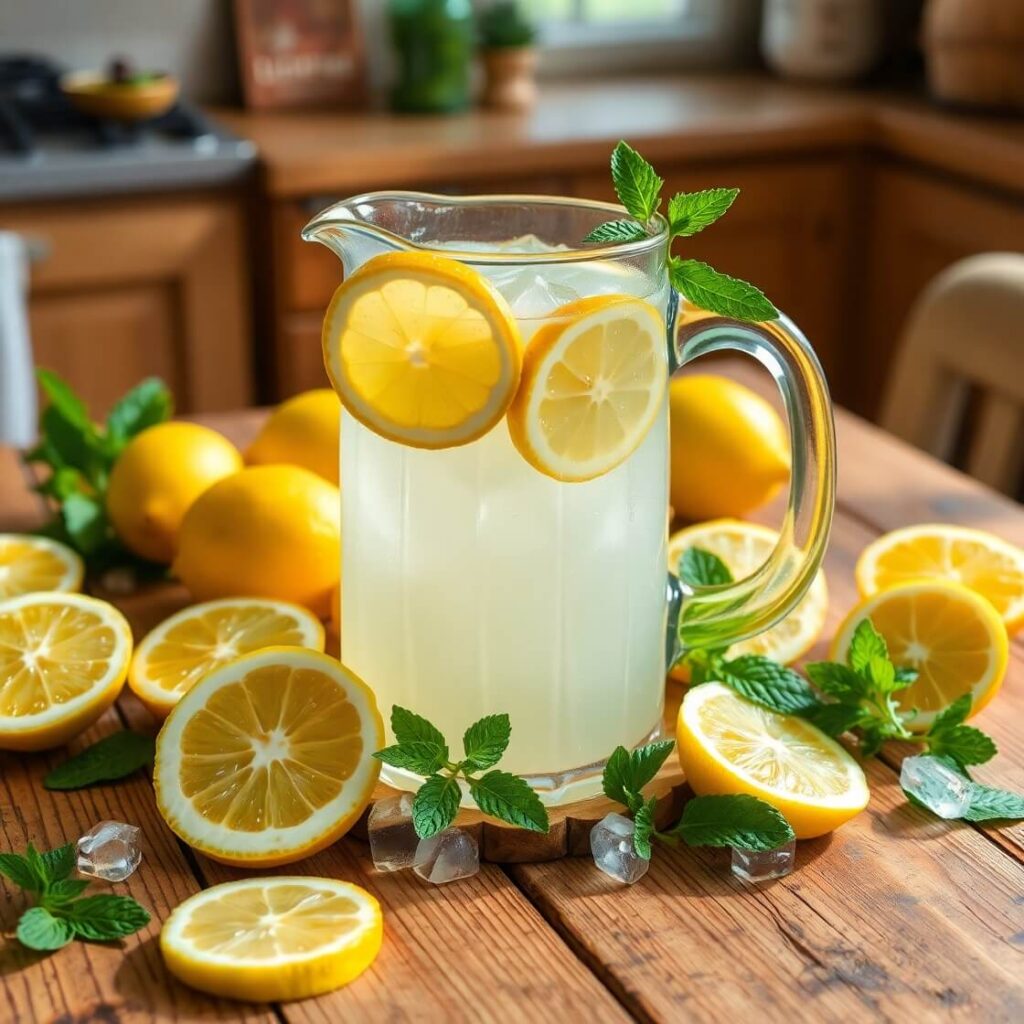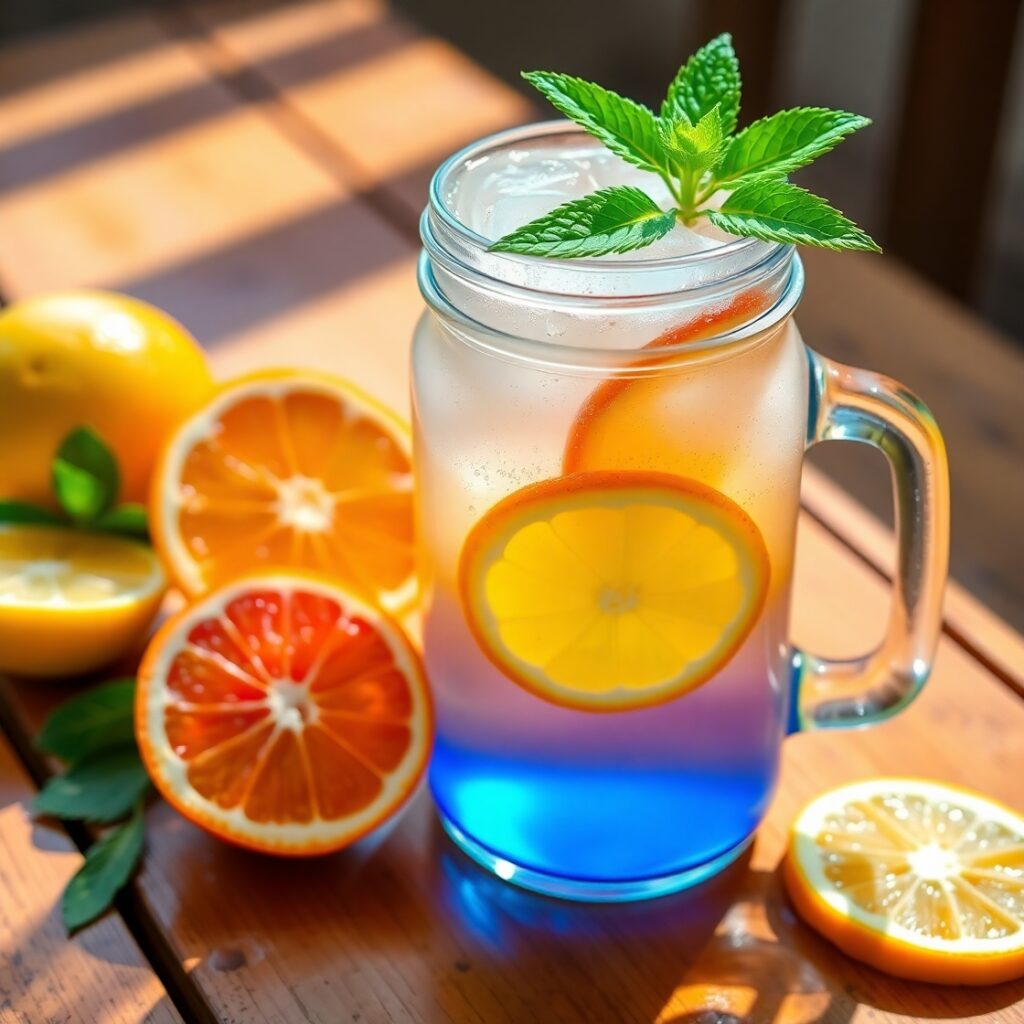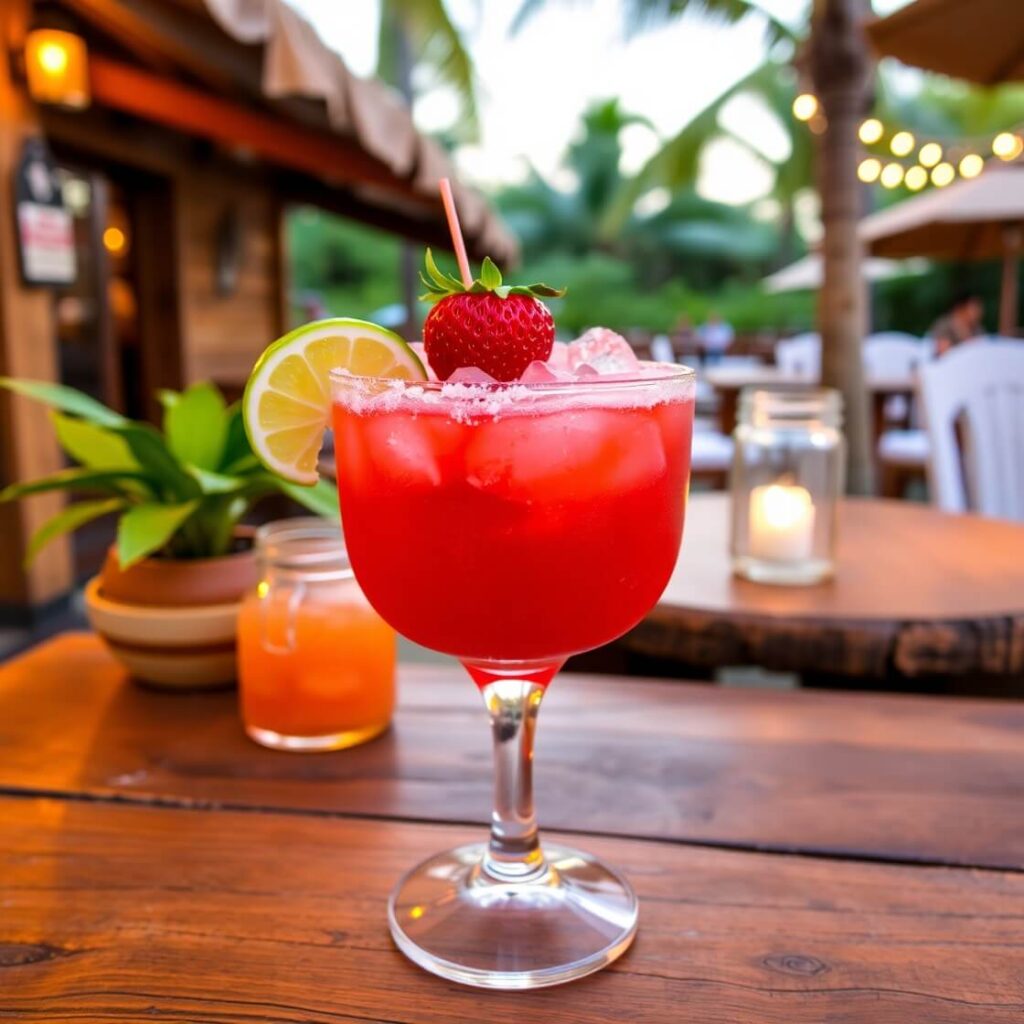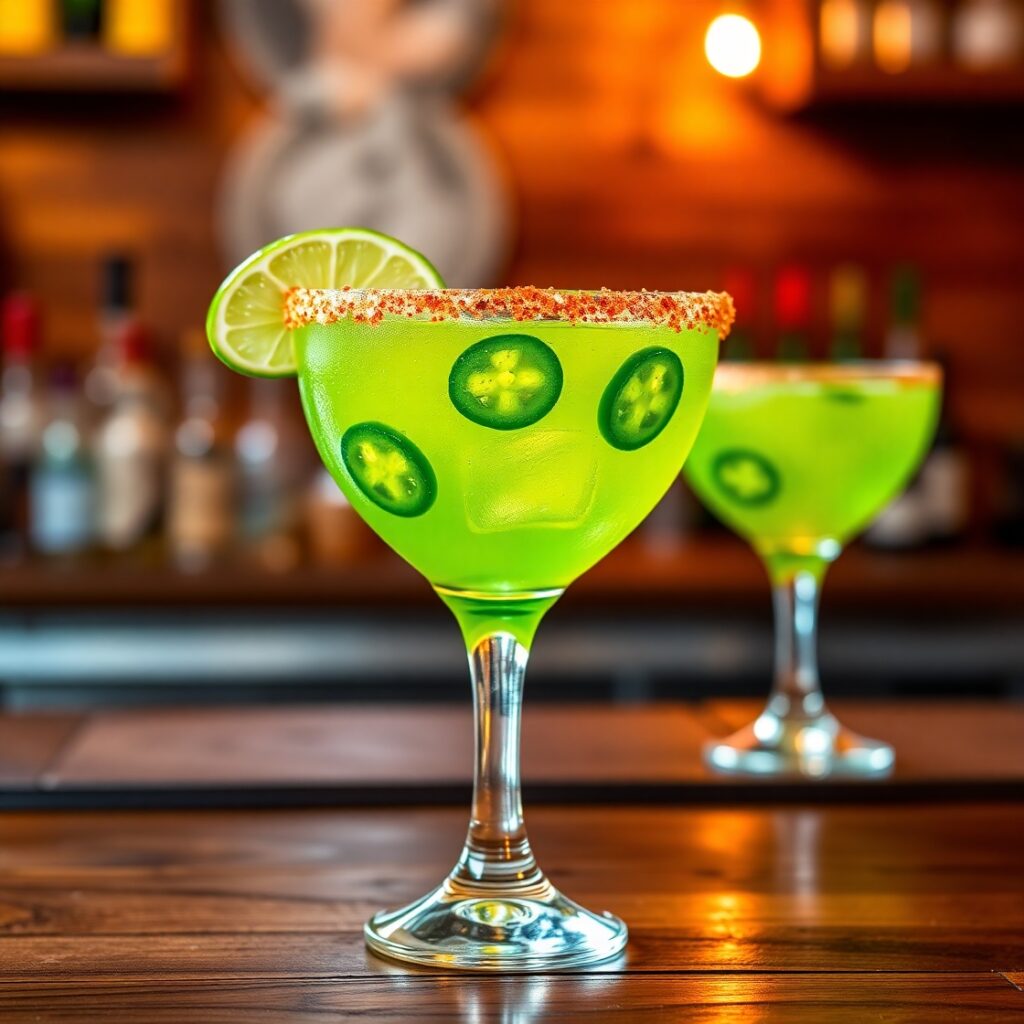Easy Spiced Fall Sangria
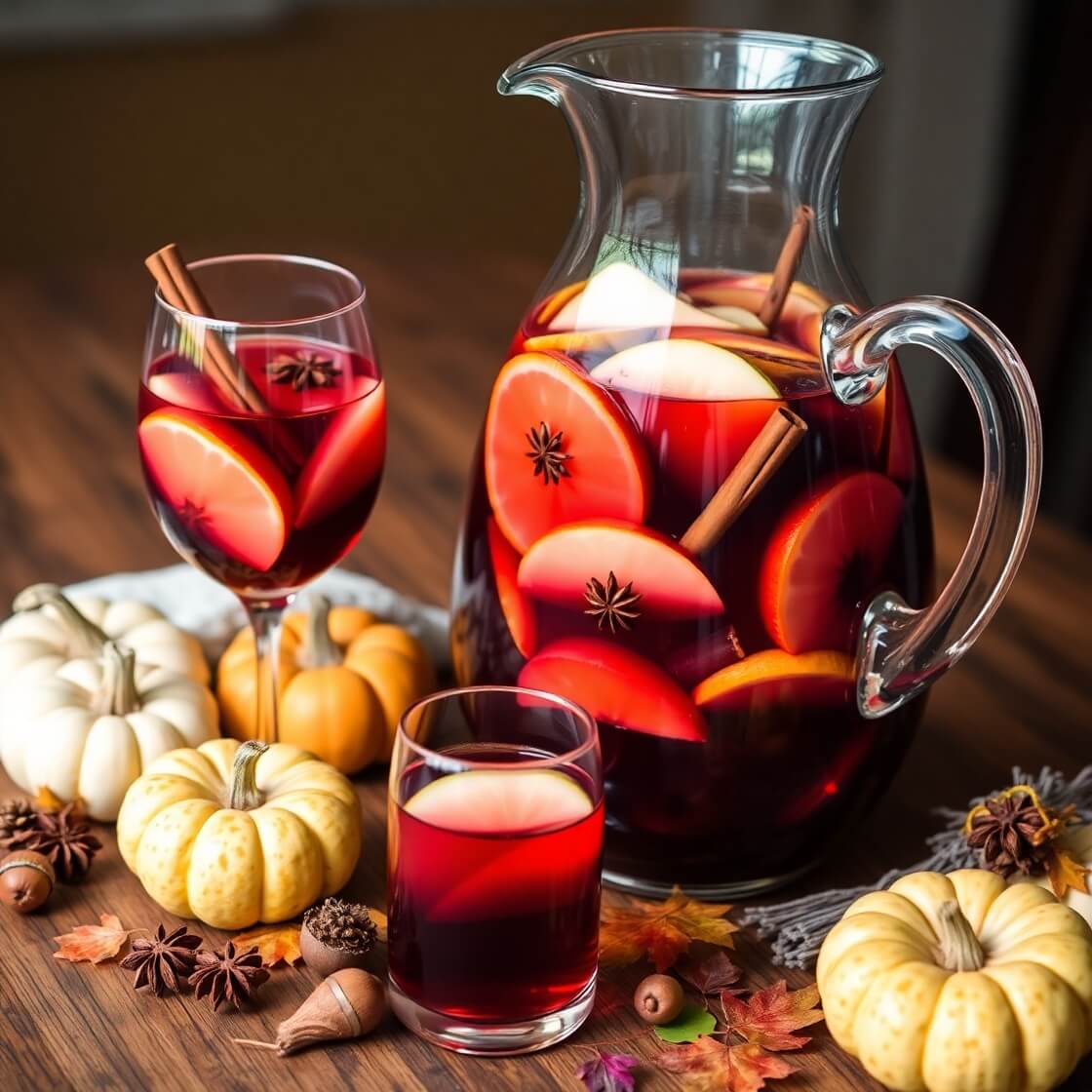
I’ll never forget the first time I made this fall sangria. It was a crisp October evening, and I’d just returned from the farmers’ market with a basket brimming with crisp apples, deep-red pears, and tiny clusters of late-season grapes. The kind of bounty that makes you feel like fall is wrapped in a blanket and handed to you. I wanted something that tasted like the season—warm spices, sweet fruit, and a touch of cider comfort—but also something refreshing enough to sip slowly while my kids ran through piles of leaves outside.
As I chopped the fruit and tossed it into my largest glass pitcher, the aroma of cinnamon and orange zest filled the kitchen. I poured in the wine and cider, and it was almost magical how the colors mingled—ruby reds and golden yellows, flecks of spice floating lazily on top. My husband wandered in, sniffed the mix, and said, “This smells like a hug in a glass.” That’s when I knew: this wasn’t just a drink. It was an experience, a seasonal ritual in a pitcher.
What Makes This Sangria So Special
Fall sangria is all about balance. You want the sweetness of the cider and fruit to play nicely with the dry wine, while the spices—cinnamon sticks, star anise, and a hint of clove—bring that cozy warmth that screams autumn. Unlike summer sangrias, which lean heavily on citrus and berries, this version is rich, layered, and comforting, perfect for evenings by the fire or casual brunches with friends.
Another thing I love? It’s ridiculously forgiving. Use what’s in season. Swap apples for pears, cider for sparkling apple juice, or even a splash of brandy if you like your sangria with a little extra warmth. There’s room to experiment without ever risking a disaster.
Gathering the Ingredients: Why Every Choice Counts
- Apples: Choose crisp varieties like Honeycrisp or Fuji; they keep their shape and texture after soaking. Avoid mealy apples.
- Pears: Bartlett or Bosc are best—juicy, soft, and fragrant.
- Grapes: Red grapes add sweetness and color; Concord grapes, if available, provide a bold burst of flavor.
- Citrus: Orange and lemon are optional, but a bit of zest brightens the sangria and keeps it from feeling heavy.
- Spices: Whole cinnamon sticks and star anise infuse slowly without overpowering. Add a pinch of cloves for extra fall warmth.
- Wine Base: Use a dry red wine that’s not too tannic, such as Merlot or Grenache, so it complements rather than competes with the fruit.
- Cider: Apple or pear cider adds natural sweetness and enhances the autumn flavor.
- Extra Kick: A splash of brandy or orange liqueur elevates the sangria, though it’s optional.
Step-by-Step: Crafting Your Fall Sangria
Step 1: Chop the Fruit
Slice your apples and pears into thin wedges, remove seeds, and quarter the grapes if they’re large. Citrus zest can be added here, but keep slices optional if you prefer a subtler flavor. I like to toss everything gently in a large glass pitcher.
Step 2: Add the Spices
Tuck cinnamon sticks, star anise, and a few cloves between the fruit. This ensures the flavors infuse evenly. One mistake I see often is over-stirring at this stage—it bruises the fruit and makes the sangria cloudy. Patience is key.
Step 3: Pour the Liquids
Add the wine and cider (or juice). If you’re using brandy or orange liqueur, now’s the time. Stir gently to combine. You’ll notice the liquid gradually takes on the jewel tones of the fruit—a visual cue that your sangria is already looking gorgeous.
Step 4: Chill and Marry the Flavors
Cover and refrigerate. At a minimum, 2 hours, but overnight is better. I often taste at the 3-hour mark; sometimes, a little extra honey or sugar is needed if your cider is too tart. This is the part where patience really pays off—the fruit softens just enough, and the spices release their warmth.
Step 5: Serve with Flair
When ready, pour into glasses filled with ice. Add a fresh cinnamon stick or a slice of apple for garnish. My favorite presentation tip? Serve it in a clear glass pitcher on a wooden tray with a few extra cinnamon sticks scattered around—simple, seasonal, and inviting.
Playing With Variations and Substitutions
Not all kitchens are alike, and this sangria adapts beautifully.
- Vegan / Non-Alcoholic: Replace wine with a non-alcoholic red blend or grape juice, and brandy with apple juice. The cider does the heavy lifting in flavor.
- Kid-Friendly: Skip the alcohol entirely and rely on sparkling apple cider or pear juice. Add sliced fruit for a fun, drinkable fruit salad.
- Spice Swaps: If you don’t have star anise, a small pinch of nutmeg works. Fresh ginger slices add warmth and a little zing.
The key is flexibility. Fall sangria isn’t meant to be rigid—it’s meant to showcase seasonal ingredients while still being approachable.
Pro Tips and Common Pitfalls
From years of trial and error, I’ve learned a few things the hard way:
- Avoid letting your sangria sit too long once ice is added—it waters down quickly.
- Don’t over-slice your fruit. Thin slices or chunks work best; too small, and they’ll disintegrate.
- Balance is everything. Taste before serving, especially if your cider is extra tart or your brandy extra strong. Adjust sweetness accordingly.
- Use a large glass pitcher. It allows the fruit and liquid to mingle without overcrowding, ensuring every sip tastes like the perfect fall blend.
The smell while chilling is almost intoxicating; that’s your cue that the spices are working their magic.
Serving Your Fall Sangria Like a Pro
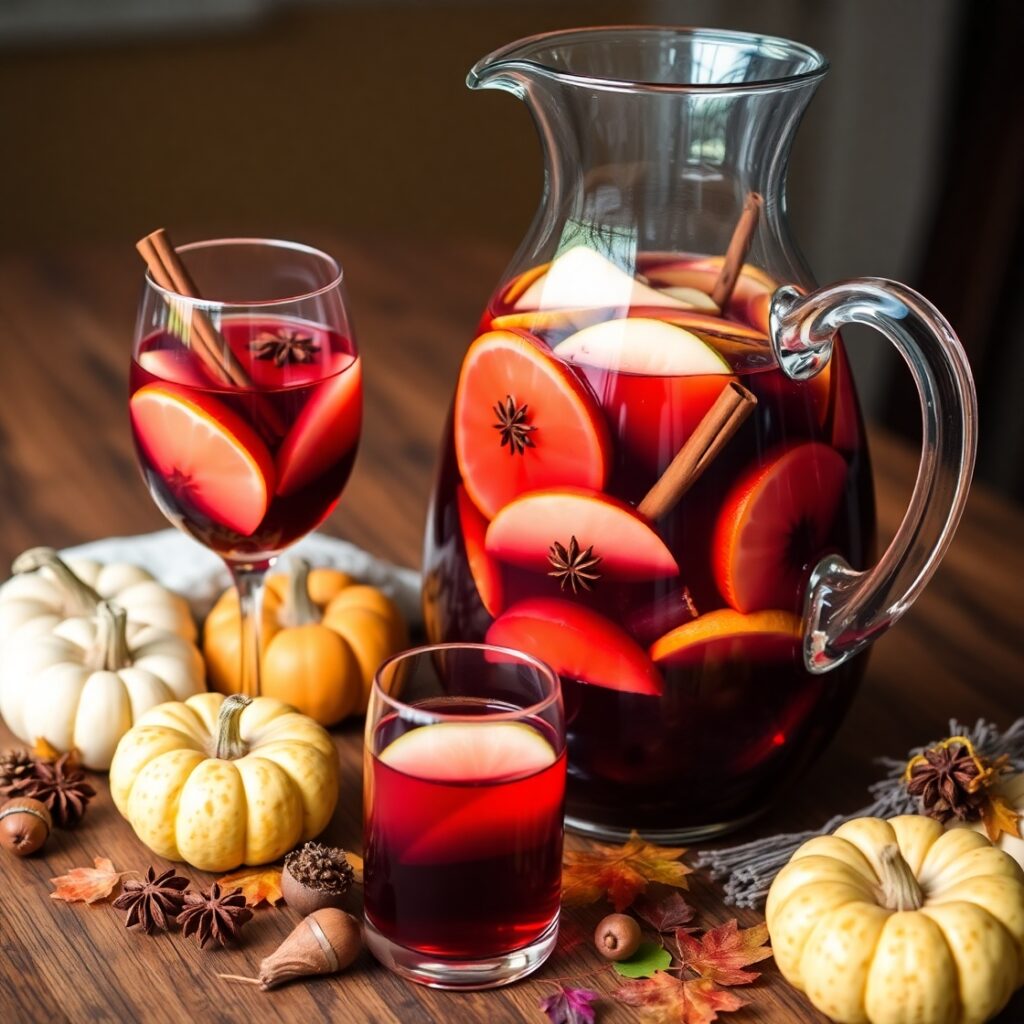
There’s something about pouring sangria into a glass that makes a gathering feel instantly festive. I’ve found that presentation makes a surprising difference—especially when your guests can see the jewel-toned fruit floating in the liquid.
Ice is optional, but I usually serve over a few cubes to keep things cool without watering it down. Adding a cinnamon stick or thin apple wedge as garnish elevates the drink without looking fussy. If it’s a brunch, I’ll often set out a small tray of fresh herbs—rosemary or thyme sprigs—which complement the warm spices beautifully. And don’t forget a few extra fruit slices in a bowl nearby; guests love picking at them after finishing their glass.
For casual evenings, a large glass pitcher on a wooden tray works just as well. The visual of floating fruit, glowing in natural light, adds instant charm to your kitchen table or coffee station. I’ve caught myself lingering just to admire the colors before anyone else arrives—it’s that pretty.
Pro Notes & Kitchen Wisdom
Over the years, a few small tweaks have made my fall sangria reliably delicious:
- Fruit Prep Matters: Avoid bruising fruit during chopping. It’s tempting to speed through, but a gentle hand keeps the sangria clear and attractive.
- Layer Flavors: Pouring the cider last helps retain its sparkle. Stir gently to avoid crushing the fruit.
- Adjust Sweetness Last: Sweetness can vary wildly depending on the cider and fruit. Taste before serving and tweak with a drizzle of honey or a sprinkle of sugar.
- Spice Control: Cinnamon sticks and star anise infuse slowly. If you want a subtler flavor, remove them after a few hours. Leaving them overnight intensifies the spice.
- Avoid Over-Chilling: The sangria tastes best slightly chilled, not ice-cold. Too cold and the flavors are muted.
One memorable mishap I had was letting the sangria sit too long with ice in it before serving. The ice melted, and the beautiful ruby color became pale, watery, and disappointing. Lesson learned: chill in the fridge, then add ice just before pouring.
Frequently Asked Questions
Can I make this sangria non-alcoholic?
Absolutely. Replace the wine with unsweetened grape juice or a non-alcoholic red blend, and the brandy with extra cider or juice. The fruit and spices still shine through.
How long can I store it?
Up to 3 days in the fridge is ideal. After that, fruit starts to break down, and the texture changes. Flavor remains pleasant but less visually appealing.
What wines work best?
Medium-bodied reds like Merlot, Grenache, or Zinfandel are perfect. Avoid overly tannic or oaky wines—they clash with the sweet cider and fruit.
Can I use frozen fruit?
Yes, but thaw first if possible. Frozen fruit can add extra water as it defrosts, slightly diluting your sangria.
Any tips for making it kid-friendly?
Omit the alcohol entirely, and rely on sparkling cider or pear juice. It’s a fun, festive drink kids can enjoy, with all the flavor and seasonal charm.
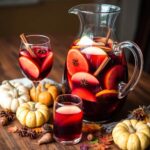
Fall Sangria
- Total Time: 2 hours (minimum)
- Yield: 6 1x
- Diet: Vegetarian
Description
This Fall Sangria is the perfect drink to celebrate the season. With its deep red wine base and a mix of apples, pears, and autumn spices, it’s a cozy, comforting beverage that’s ideal for any fall gathering. Whether you’re hosting a party or simply enjoying a quiet evening, this drink will bring warmth and festivity to your table.
Ingredients
- 1 bottle medium-bodied red wine (Merlot or Cabernet Sauvignon)
- 1 large apple, sliced
- 1 large pear, sliced
- 1 orange, sliced
- 2 cinnamon sticks
- 2 star anise
- 1/4 cup brandy
- 2 tbsp maple syrup (adjust to taste)
Instructions
- Step 1: Slice the apple, pear, and orange into thin wedges, ensuring to keep the peel on.
- Step 2: In a large pitcher, combine the sliced fruit and pour in the wine.
- Step 3: Add the cinnamon sticks, star anise, brandy, and maple syrup. Stir gently to combine.
- Step 4: Cover and refrigerate for at least two hours, or up to 24 hours.
- Step 5: Serve chilled in glasses with extra fruit slices and a cinnamon stick for garnish. Optionally, add sparkling water for some fizz.
Notes
- Feel free to adjust the sweetness by adding more maple syrup if desired.
- For a non-alcoholic version, replace the wine with apple cider.
- Prep Time: 15 minutes
- Cook Time: N/A
- Category: Drink, Cocktail
- Method: No cooking
- Cuisine: Spanish, Fall
Nutrition
- Serving Size: 6
- Calories: 120
- Sugar: 15g
- Sodium: 5mg
- Fat: 0g
- Saturated Fat: 0g
- Unsaturated Fat: 0g
- Trans Fat: 0g
- Carbohydrates: 20g
- Fiber: 2g
- Protein: 0g
- Cholesterol: 0mg

